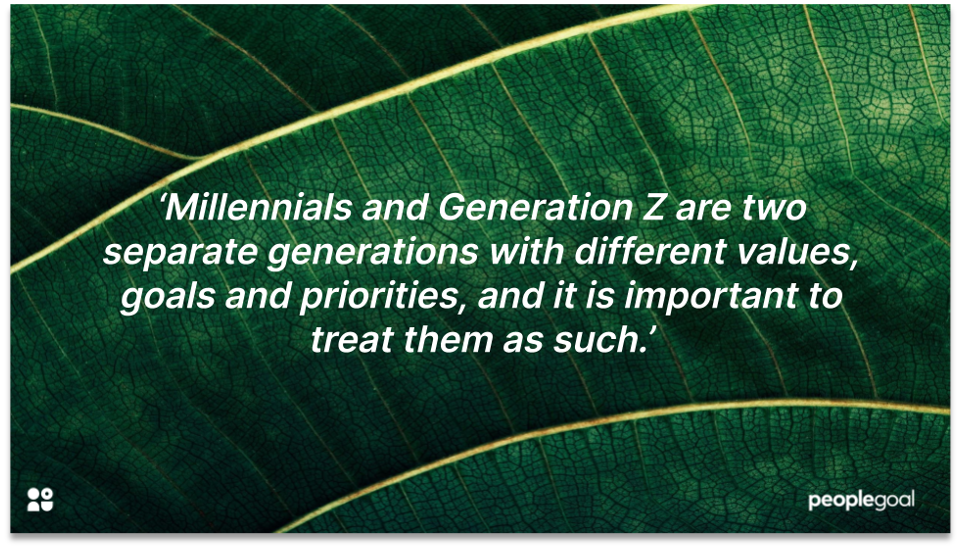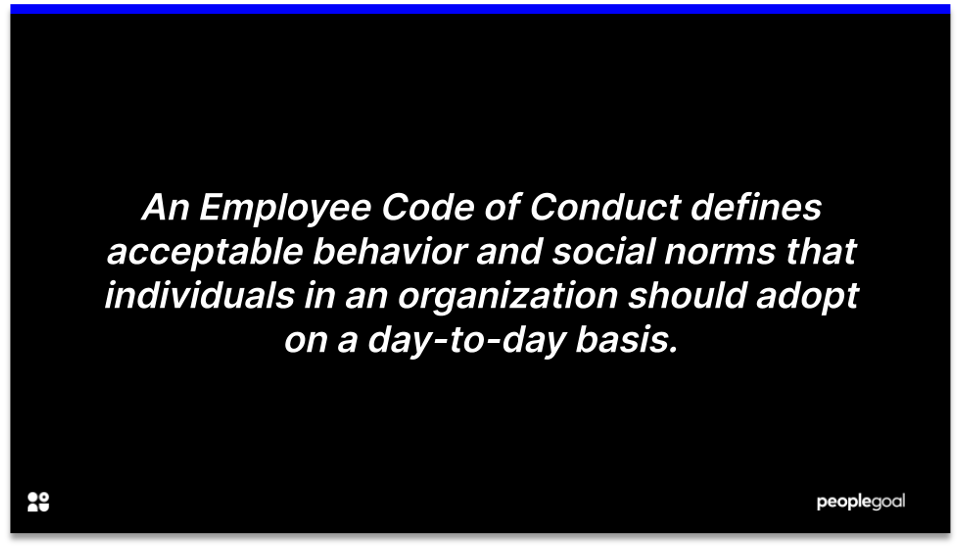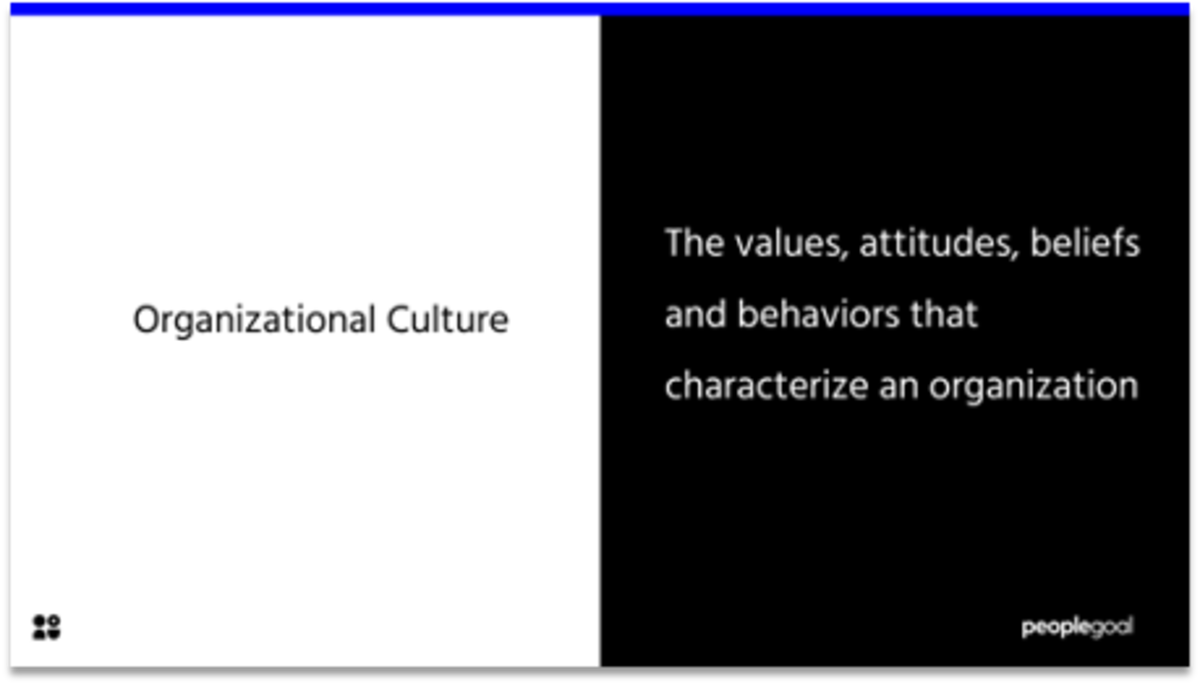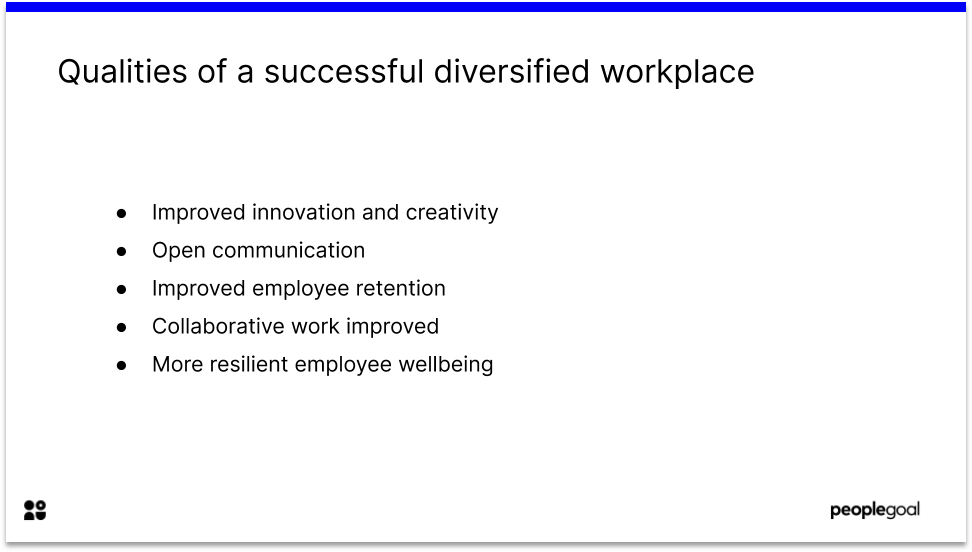As society has developed and changed for the better, there has been an increasing recognition for the importance of ensuring that all employees receive equal treatment in the workplace. Stemming from the fight for civil rights in the 1960s, the understanding that some groups are prone to disparate treatment has been influential in preventing a sustained disparate impact.
Discriminatory practices are unjust and illegal. By establishing employment discrimination laws, it prohibits employers from being able to intentionally discriminate against a member of a protected group.
By enlisting policies and measures dedicated to reducing the disparate treatment of these protected groups, there is a greater potential to remove discrimination from the workplace. Therefore, contributing to establishing a safer experience of work for all.
Within this blog, we will look to understand what disparate treatment is, why it must be prevented and how it relates to HR. This blog is written with the hope of better-informing leaders and team members of the importance of following such anti-discriminatory practices. As reflected in the following paragraphs, that necessity will become evident.
What is Disparate Treatment?
Getting straight into it, disparate treatment is defined in the Title VII of the Civil Rights Act of 1964 as ‘Intentional discrimination against an employee or applicant because of their membership in a protected class or classes’.
These protected classes relate to race, gender, sex, age, religion, national origin, disability, marital status, sexual orientation, and other classifying aspects of an individual’s identity. It is unlawful to decline someone from being offered a job or receiving a promotion on the basis of their identity. This would be classified as intentional discrimination.
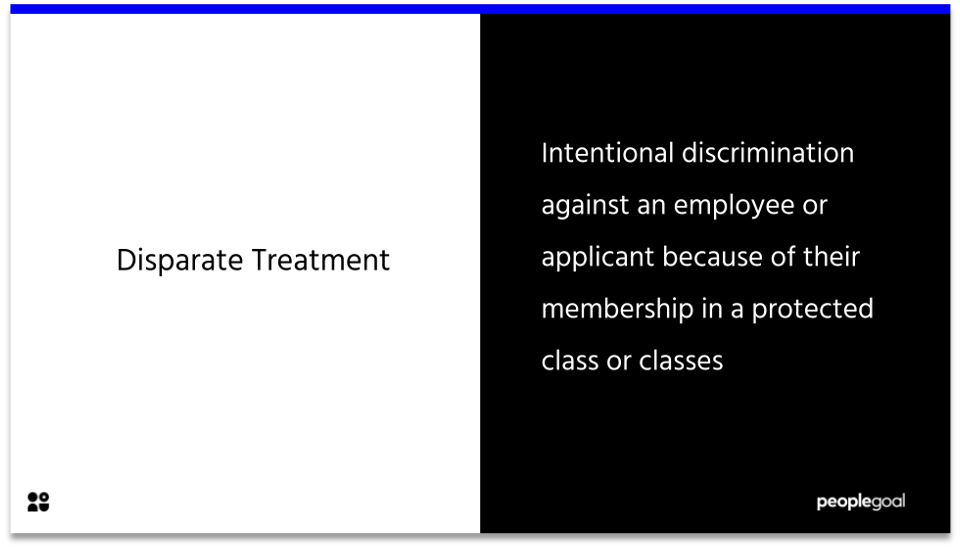
Such measures facilitate a legitimate non-discriminatory employment practice, in which those rightfully deserving of being given employment opportunities are not hindered by belonging to a protected group. The reason such protection is required comes from a persistent bias towards those in power – typically, white males. A stand-out example from a hiring bias study has shown that resumes with names that sound non-white receive fewer invitations than those with white-sounding names.
Why we must prevent Disparate Treatment
Disparate treatment in work will have an adverse impact on individuals. Disparate impact and disparate treatment are unequivocally connected. The intentional discrimination of protected groups contributes to further separation between groups, this is disparate impact.
There are many disparate treatment cases that are difficult to prove, however, with evidence of a clear disparate impact an individual can make a prima facie claim.
As outlined by the American Bar Association, a prima facie claim is a legal claim that has sufficient evidence to proceed to trial.
Using the four-fifths rule to measure equality in employment practices makes it extremely clear if there is a disparate impact.
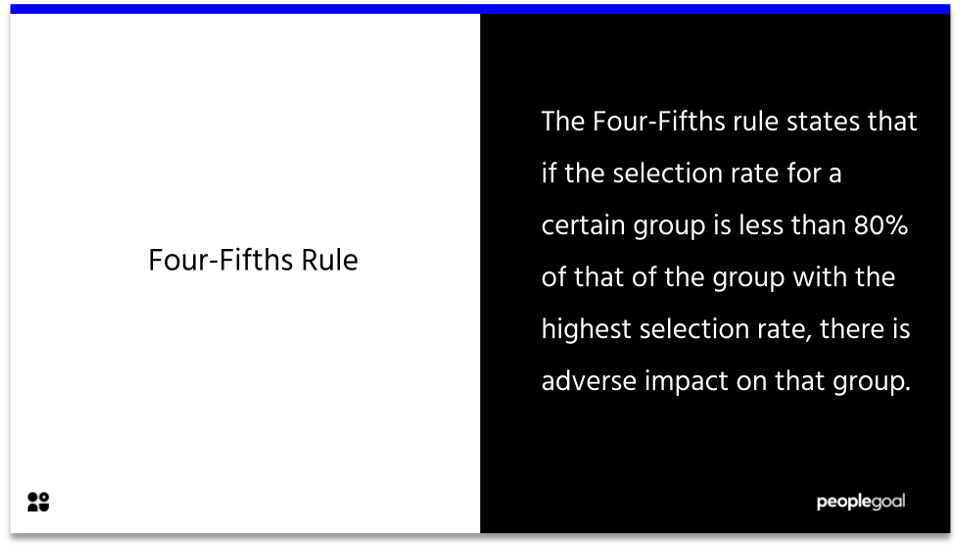
An example of this disparate impact and disparate treatment can be demonstrated with discriminatory practices towards a female employee. Counting the total number of female employees compared with the total number of males will demonstrate if there is a disproportionate representation of one particular group. If any protected group has less than 80% of the group with the highest selection rate then there is disparity.
Recognizing and acting against Disparate Treatment
When making any employment decision, of course, the priority must be put on finding the most suitable candidate. There is no point in hiring someone if they do not qualify for the role, there is no issue with not hiring someone for legitimate non-discriminatory reasons.
In reverse, it is important to prevent any disproportionate impact by hiring employees that qualify for the position. Holding back from offering a job to a qualified candidate on the basis that they are a member of a protected class is illegal. Such practice breaks the employment discrimination laws and can lead to serious punishments.
Should such a matter be taken to trial, with evidence suggesting that an organization used discriminatory reason for its actions, there will be a routine of burden-shifting. The parties on each side of the case must be able to disprove any facts or assertions presented by the opposition. For such disparate treatment cases, there are many factors to consider when trying to determine if there was intentional discrimination in the employment practices.
To prevent disparate treatment cases, there are measures that must be put in place. To begin with, any organization should support Diversity and Inclusion (D&I) initiatives. Having a clear policy on D&I that is well communicated to all employees is paramount to providing teams with the necessary guidance on the correct behaviors in work.
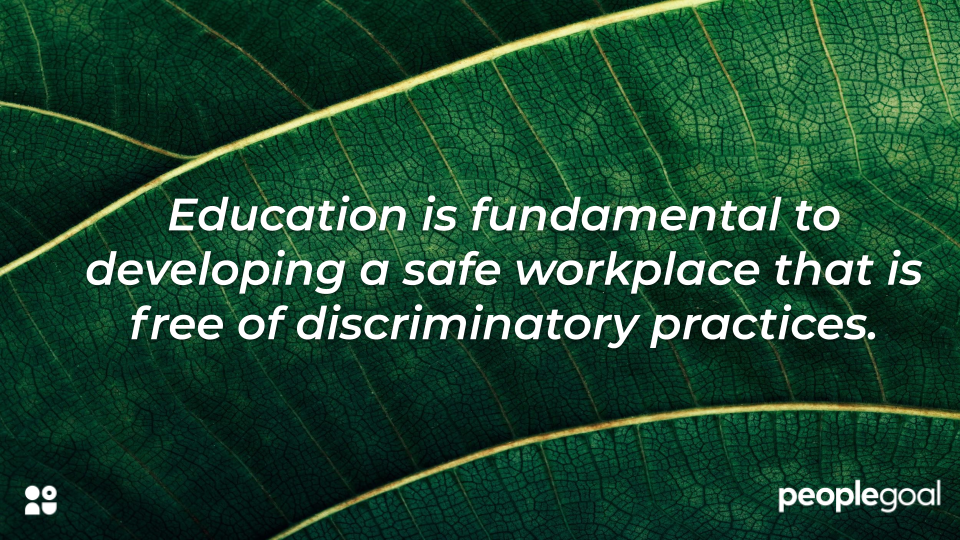
How HR must take responsibility for Disparate Treatment
From an HR perspective, there are multiple initiatives that can be put in place to assist in establishing a workplace that supports diversity, equity and inclusion. All organizations in the US must follow the laws and regulations defined in the Equal Employment Opportunity Commission (EEOC). Publishing and sharing an official policy on employee conduct with information about protected classes and the surrounding behavior will illustrate the organization’s intentions for how employees engage with others in work.
Documentation is one route to better informing your workforce on preventing disparate treatment. Providing employees with this information should assist in discouraging intentional discrimination of protected groups.
With a clear structure and channel of communication on the accepted behaviors of the workforce, the disparate impact and disparate treatment cases should subside.
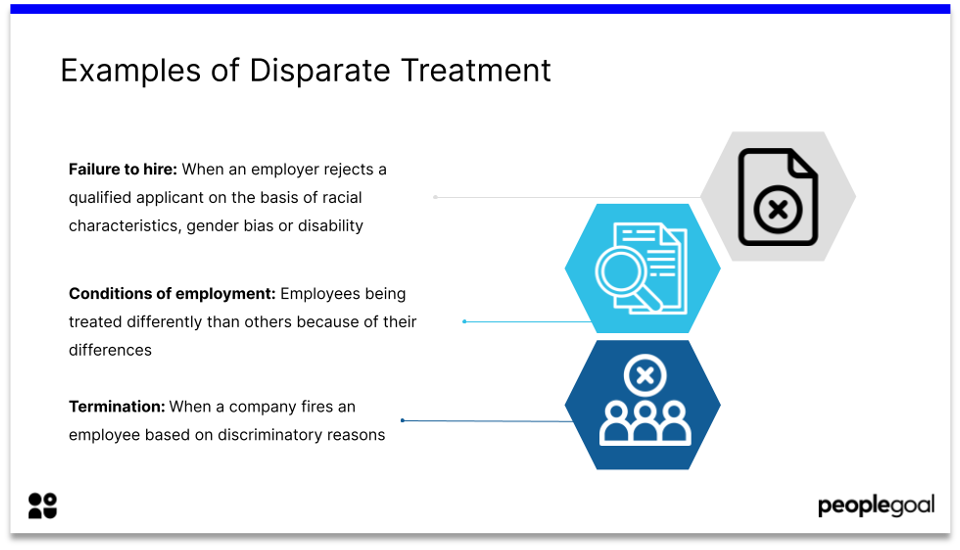
Education and Disparate Treatment
On top of all of the information that can be shared with team members to discourage them from acting or tending towards intentional discrimination, training programs and other learning practices will enable employees to develop a complete understanding of legal and ethical conduct expected of them in the workplace.
The objective of diversity training is to increase participants’ knowledge and communication around the different protected groups and diversity-type awareness.
Diversity training can have lots of benefits for an organization. They can help to prevent civil rights violations, increase the inclusion of different identity groups, promote better teamwork, amongst many more benefits of an inclusive work environment. The main goal of a successful diversity training program is to create a positive work environment by helping employees recognize and respect the differences among co-workers.
If you are looking for some examples of activities and practices to promote diversity and inclusion initiatives then take a look at our blog here.
These learning programs present a great opportunity to encourage stronger employee relationships. With a more engaged and positive team, productivity will significantly rise.
From a legal perspective, the promotion of these training programs will also be powerful for reducing the disproportionate impact that otherwise threatens your organization.
Reflecting on how far not only the workplace, but also society, has developed since the publication of Title VII of the Civil Rights Act of 1964 and other employment discrimination laws, there has been a considerable decline in the amount of disparate impact and disparate treatment. Increasing awareness of intentional discrimination and punishing those who do not abide has contributed to establishing a safer workplace for all employees.
Regardless of membership to a protected group, it is important to create a workspace that encourages all employees to prosper in their job.
Ready to 3x Your Teams' Performance?
Use the best performance management software to align goals, track progress, and boost employee engagement.


